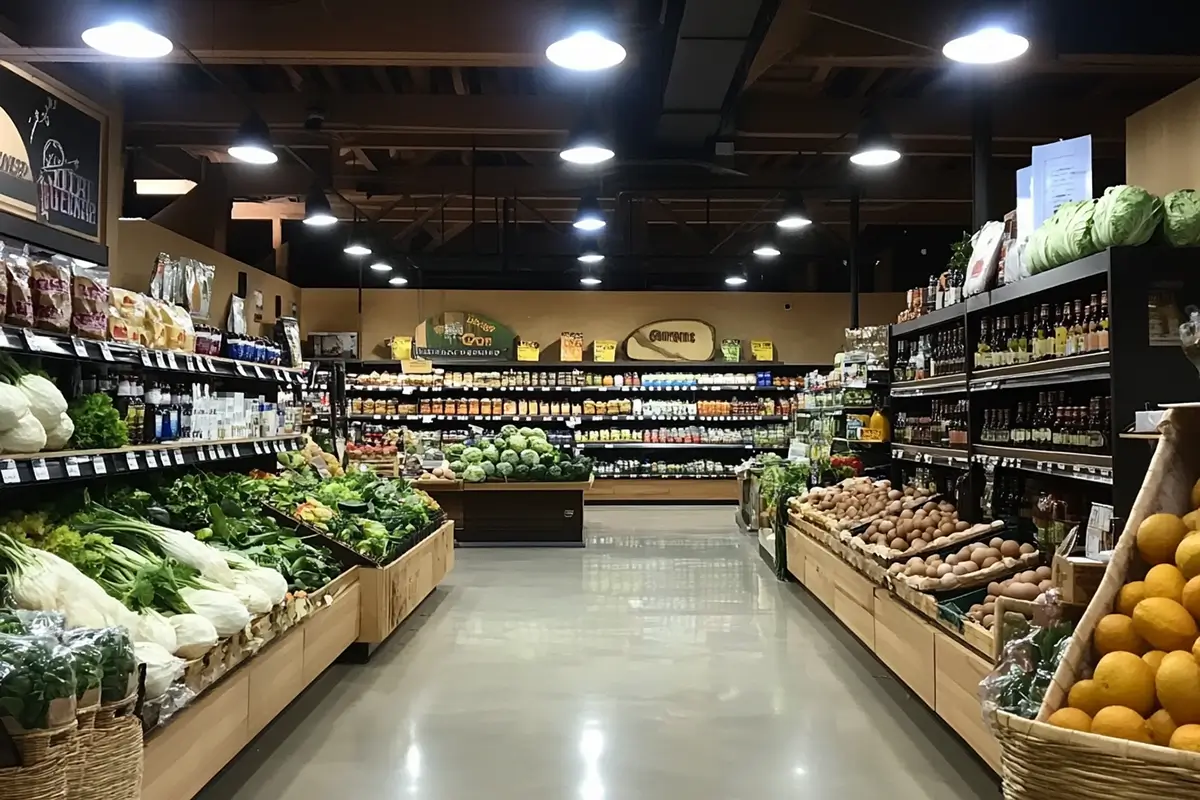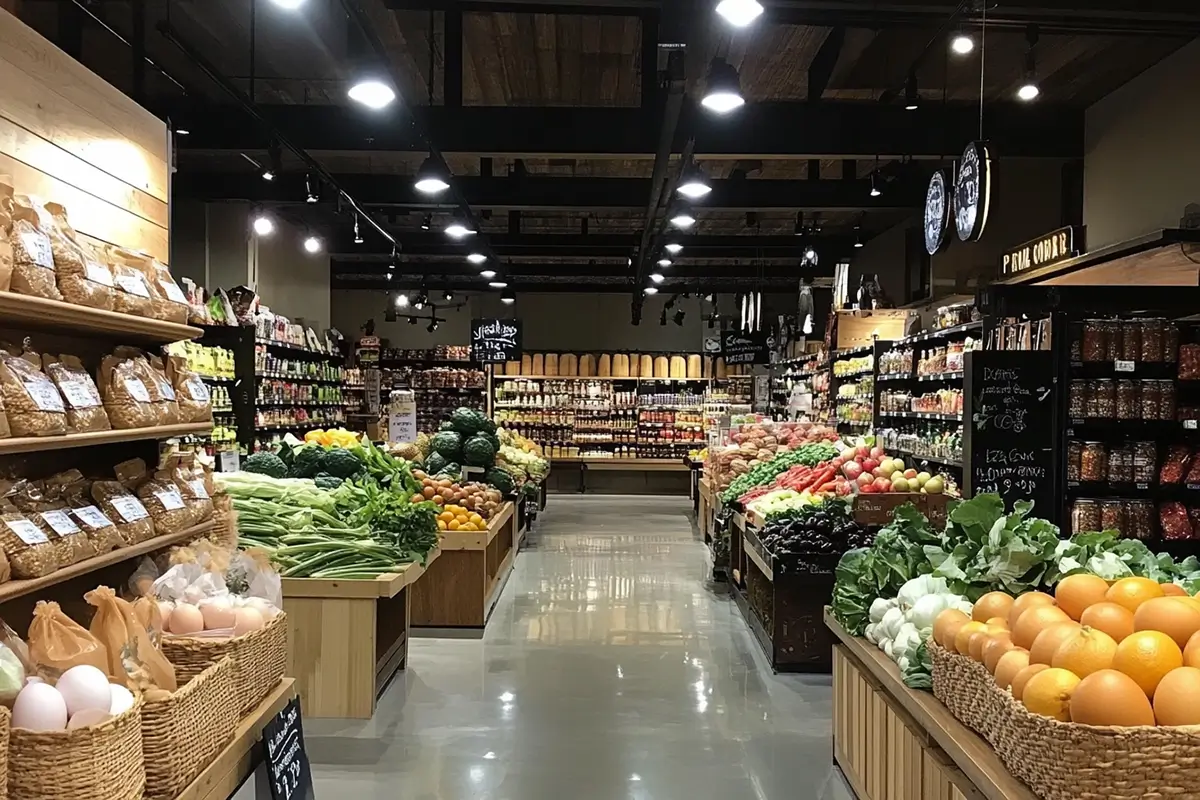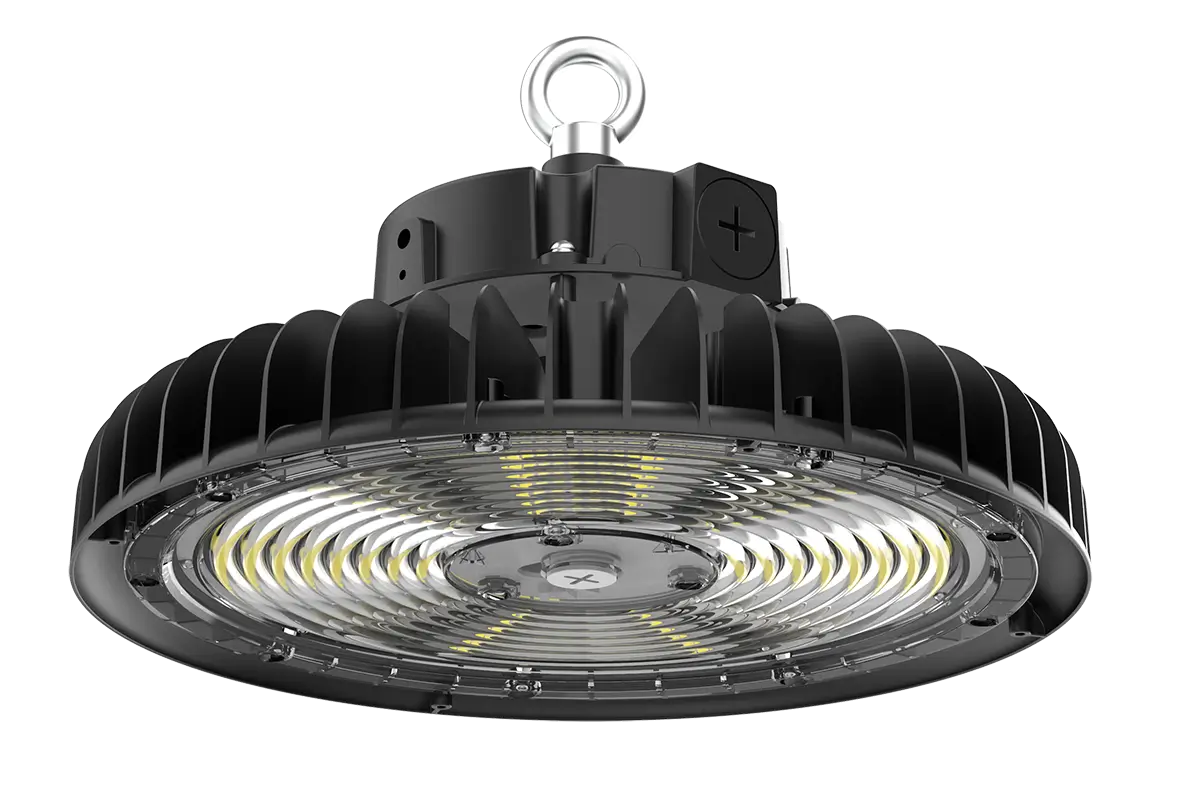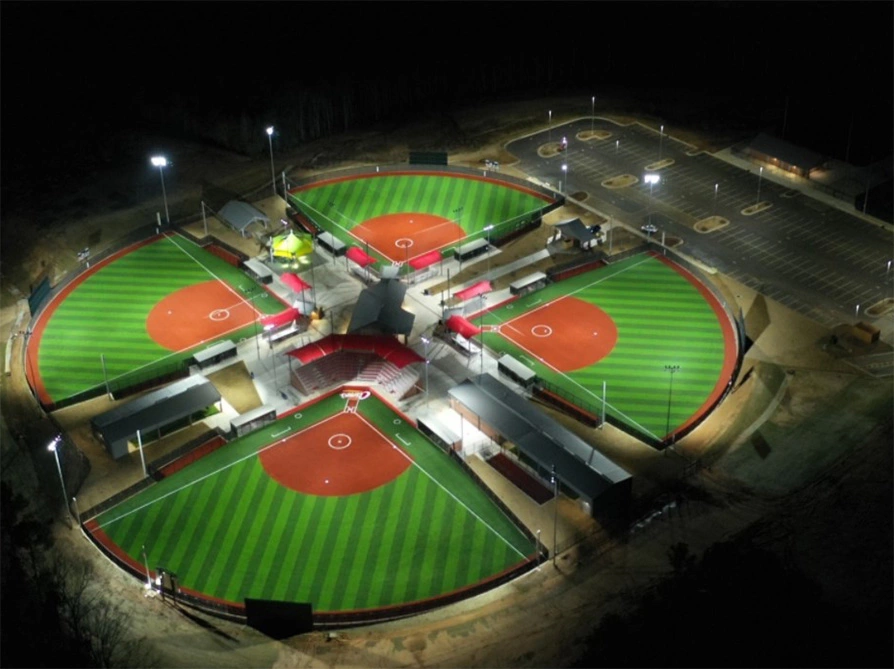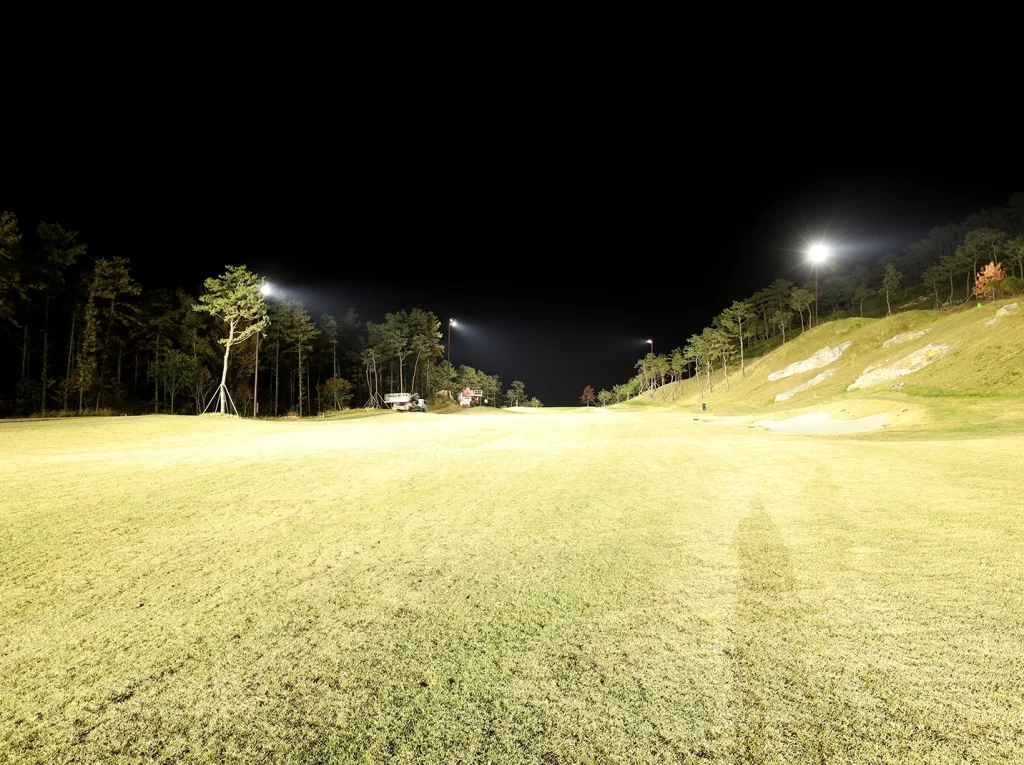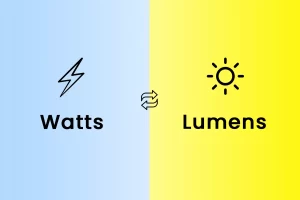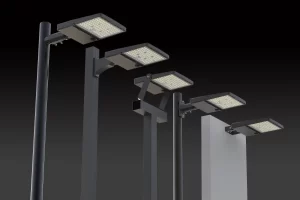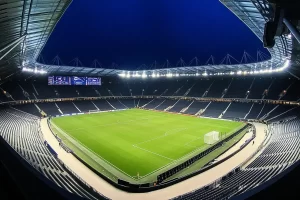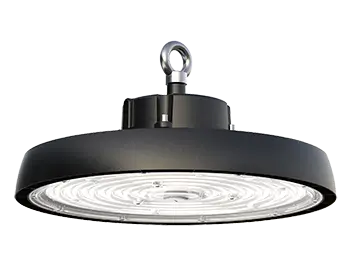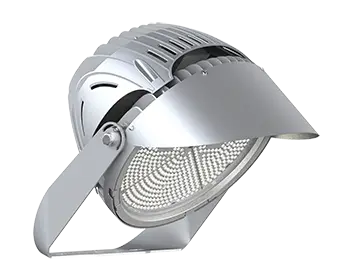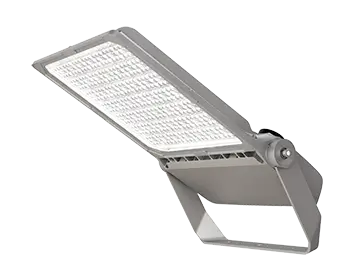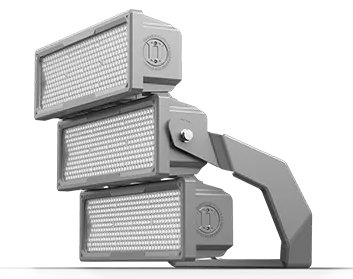Supermarket lighting is essential for creating an inviting shopping environment and showcasing products effectively. Among various lighting solutions, high bay lights stand out for their efficiency and versatility. This guide will cover important lighting considerations—such as contrast ratios, Correlated Color Temperature (CCT), and Color Rendering Index (CRI)—as well as the specific lighting needs for different food categories, helping you create an optimal shopping experience.
Key Lighting Considerations
Contrast Ratios
Contrast ratios significantly impact product visibility. A well-planned lighting design enhances contrast between products and their backgrounds, making them more eye-catching. High bay lights, with their ability to provide strong, even illumination, are perfect for highlighting items in various sections, such as produce and bakery.
Correlated Color Temperature (CCT)
CCT affects how colors are perceived in-store, measured in Kelvin (K). Different food categories benefit from specific CCTs:
- Fruits and Vegetables: A warm white light (3000K-3500K) enhances freshness and vibrancy.
- Meat and Seafood: Cooler light (4000K-5000K) conveys quality and freshness.
- Bakery: Warm light (around 3000K) creates a cozy ambiance for baked goods.
- Wine: Soft, warm light (2700K-3000K) adds elegance and highlights colors.
Color Rendering Index (CRI)
The CRI measures how accurately a light source reveals colors compared to natural light. A high CRI (above 80) is crucial for areas where color accuracy matters, such as:
Produce Section: Ensures fruits and vegetables look vibrant and appealing.
Meat and Deli: Helps maintain perceptions of freshness, building customer trust.
Lighting Requirements for Different Food Categories
1. Fruits and Vegetables
Use bright, even lighting with a CCT of 3000K to 3500K and a high CRI to enhance the appeal of produce. High bay lights can be strategically placed to ensure uniform illumination, making the section more inviting.
2. Meat and Seafood
For meat and seafood displays, opt for cooler lighting (4000K-5000K) paired with a high CRI. This combination emphasizes freshness and visual appeal, crucial for customer confidence in their purchases.
3. Bakery
In the bakery section, warm white lighting (around 3000K) creates an inviting atmosphere and highlights the textures and colors of baked goods, enticing customers to indulge.
4. Wine Section
Soft, warm light (2700K-3000K) is ideal for wine displays, enhancing the rich colors and creating an elegant shopping experience. Dimmable high bay lights can add a sophisticated touch.
5. Grocery Aisles
General grocery aisles require bright, even lighting (around 4000K) for optimal visibility. High bay lights efficiently cover large spaces, ensuring a consistent shopping experience throughout the store.
Advantages of High Bay Lights
High bay lights are an ideal choice for supermarket lighting due to their numerous benefits:
- Energy Efficiency: LED high bay lights consume less power, lowering operational costs and promoting sustainability.
- Longevity: With lifespans of up to 50,000 hours, these lights reduce the need for frequent replacements, cutting maintenance costs.
- Versatile Coverage: High bay lights provide uniform illumination across large areas, enhancing product visibility and store ambiance.
Conclusion
Incorporating effective lighting design in supermarkets involves understanding contrast ratios, CCT, and CRI, alongside the specific requirements for different food categories. High bay lights offer a powerful solution, combining energy efficiency with excellent coverage to enhance the shopping experience. By investing in high bay lighting, supermarkets can improve product visibility, create an inviting atmosphere, and ultimately drive sales. Illuminate your supermarket with high bay lights and transform the shopping journey for your customers!


